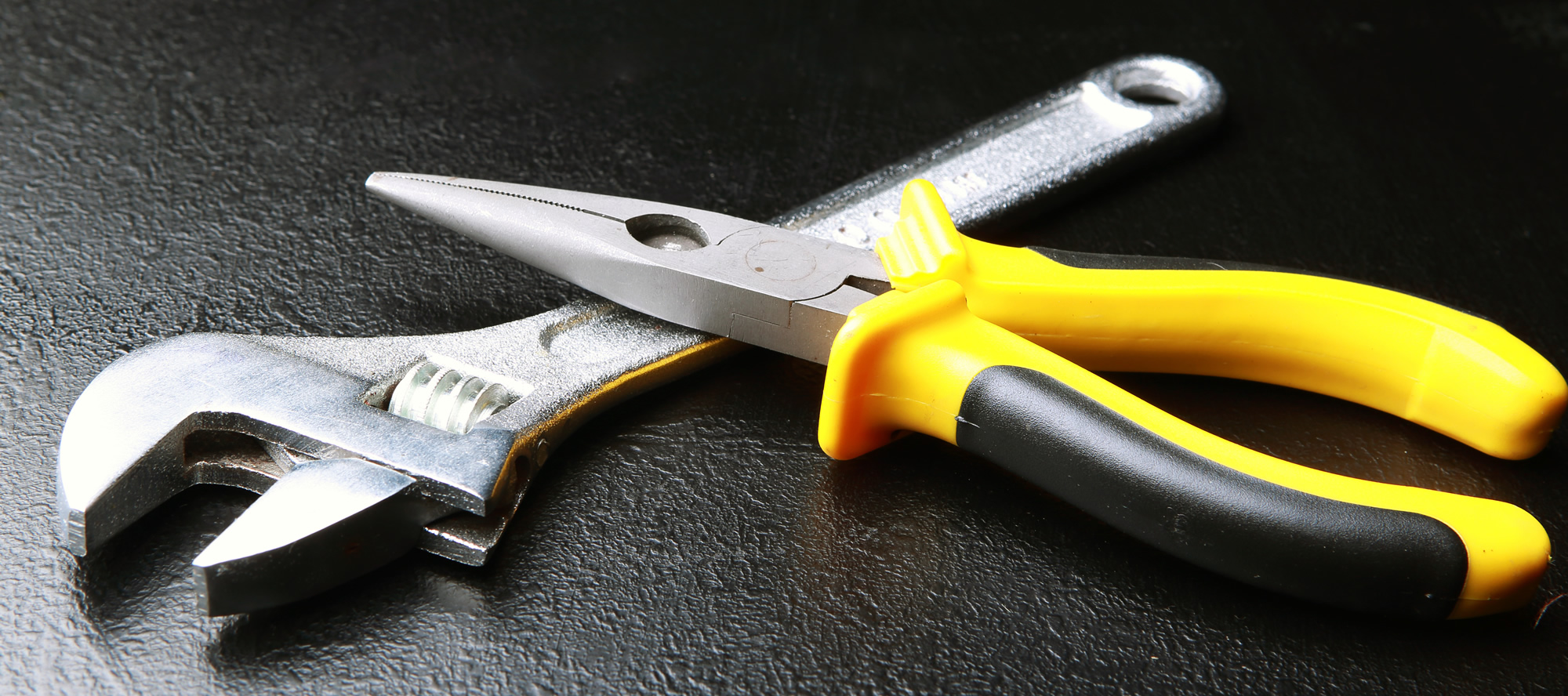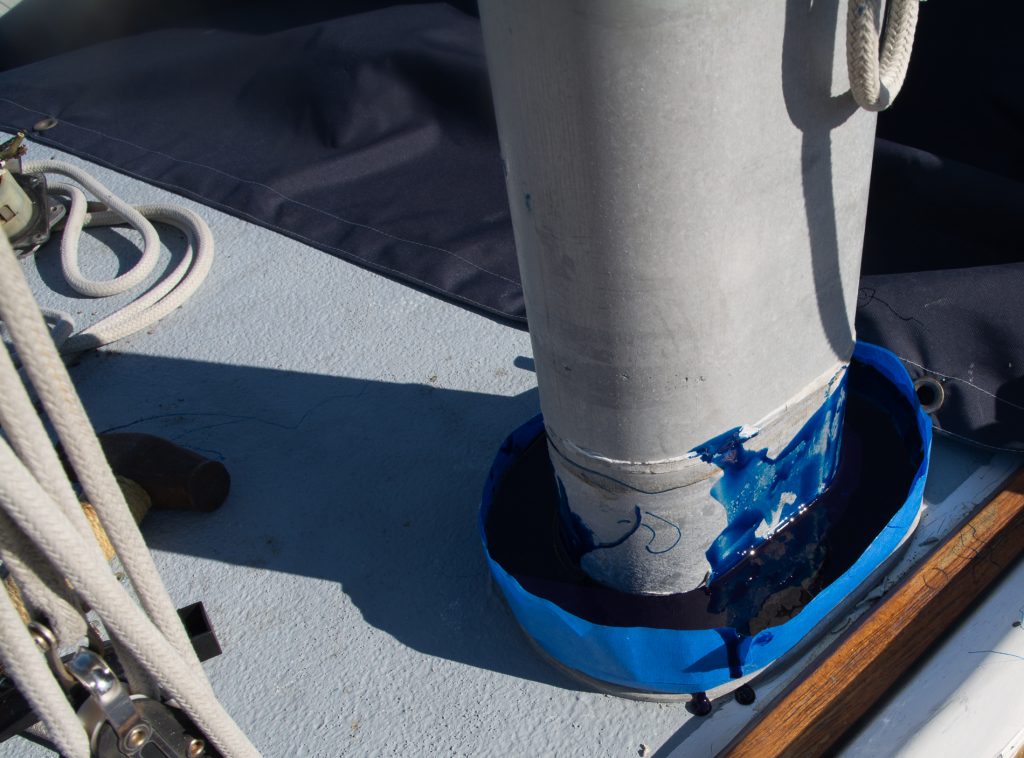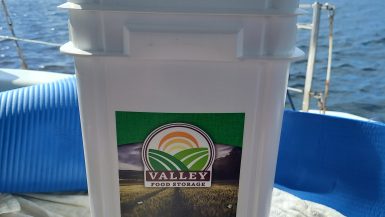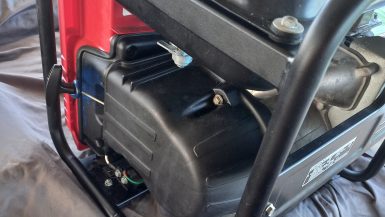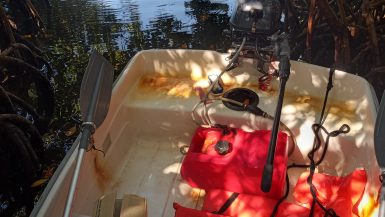I dodged a bullet this week as the cold front moved through the Artic Wastes of Northern Florida. Tuesday night was excessively cold, dipping into the 20’s overnight, so I was running the space heater at full volume all night. Around 5 am on Wednesday morning the old power cord, and shore power connection point on the boat gave out and melted. Waking up to a smoke-filled cabin (must have just happened because I had already been up at 4 am and just dozed back to sleep waiting for the alarm) was not the way I wanted to start the day. Luckily the connection gave quickly, and the overheating didn’t spread. But this left me without shore power (110v) which recharges the batteries and runs the fridge (I can run the refrigerators off 12v, but then the batteries would go dead after a couple of days). So I took a personal day from work on Friday and started on an extensive boat repair weekend.
Replacing The Shore Power
I ordered parts from www.defender.com (1/2 the price of the local West Marine) and had the parts shipped 2 Day, which they upgraded to 1 Day for me, so I got everything in on Thursday. The power cord was just a simple replacements as it’s nothing more than a glorified extension cord leading from a pedestal on the dock to the connection point on the side of the boat.
The shore power connector (plug in) is a simple replacement, just undo three wires and then attach the wires to the new connector. Except I never do things the easy way. I connected the wires but forgot to run the wire through the rubber gasket that goes between the boat and the front of the plug in. When I unscrewed the wires on the next connector, I accidentally unscrewed one too far, so the nut on the inside fell off the screw. Fixing this required that I tear the whole plug apart. I also over tightened one wire and stripped the screw. Never the easy way is my motto! A run to Lowes (as I didn’t have the correct screws onboard) equals problem solved.
Eventually I’ll completely rewire this boat, so I went ahead and replaced all the wire from the shore power connector to the first breaker inside the boat. There was a little heat damage on old wiring where it connected to the plugin and I just feel better with having run the new wire. The wiring runs to a simple terminal strip just before the breakers. All the connections were made with fork connectors which is not the way I like to wire things on the boat. Boats vibrate a lot, so using ring connectors make sure the connections stay even if the screws loosen a bit. Unfortunately, I dropped two screws down into the engine bilge which has a blackhole at the bottom which leads to the alternate universe where all the lost socks go… Back to Lowe’s. On the upside everytime I have to run for new screws or bolts I buy 2 or 3 packages of them, slowly I’m building up a usable selection of small bolts, nuts, washers, and screws.
Here are some pictures:






Sealing The Mizzen Mast
Pomaika’i is a ketch rig. This means that it has two masts, the main mast which is larger in the front and the mizzen mast which is smaller and just in front of the aft cabin. I’d already sealed up the main mast using Spartite which helped with rain getting into the main cabin. This weekend I sealed up the deck hole surrounding the smaller mizzen mast.
Pomaika’i was neglected in the years before I bought here and had a lot of small leaks when it rained. I’m in the process of rebedding the portlights in the aft cabin (been too cold to paint with epoxy paints so I can then put the portlights back in). I also adjusted the other nine portlights which slowed the leaks on all of them, and five are now watertight. This spring I’ll rebed all of them. That leaves me with three hatches to replace and should solve all my small rain leaks.
Replace Heat Exchanger
When Pomaika’i was having the transmission replaced in Fort Myers, they ran into an issue with the heat exchanger on the old Perkins 4-154 that powers the boat. A heat exchanger is like a radiator in a car. It allows sea water that is pumped into the system to circulate around the engine coolant and leech off the engine heat. The heated salt water is then expelled along with the exhaust out the stern of the boat. The tube on the top of the heat exchanger where the cap screws in had broken off. This tube had been welded once already, but the mechanic was able to weld it again to get me home from Fort Myers. The heat exchanger costs $1,700, and at the time I was under a budget having just replaced the transmission but I knew this was a temporary fix and didn’t feel confident that there wasn’t a large amount of corrosion (salt water is bad for metals) inside so I ordered a new one from Trans Atlantic Diesel which arrived this week. I pulled the old heat exchanger (not really hard, three hoses, eight nuts on the engine head, and four bolts for the exhaust connection.
I could have just replaced the heat exchanger and been done, but I realized that alternator (which I need to replace) is under the heat exchanger and it would be easier to replace this now as well. Everything went fine until the last bolt. The bolt that holds the alternator to the engine is frozen. I got the nut off, and the bolt spins freely, but the adapter is frozen to the bolt and won’t allow me to extract it. So back to Lowe’s we go (seriously buy stock in Uber/Lyft and Lowes as I’m spending tons with them). This hit me at the end of the day, so the rest of this project is being pushed off to next weekend as it’s now Sunday and I have a poker tournament to win. Here are some more photos:

